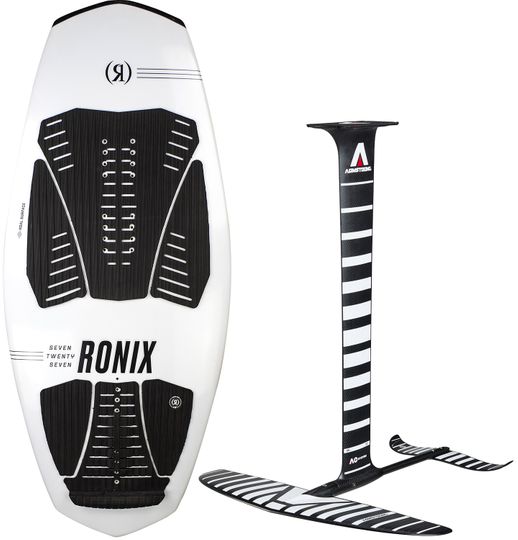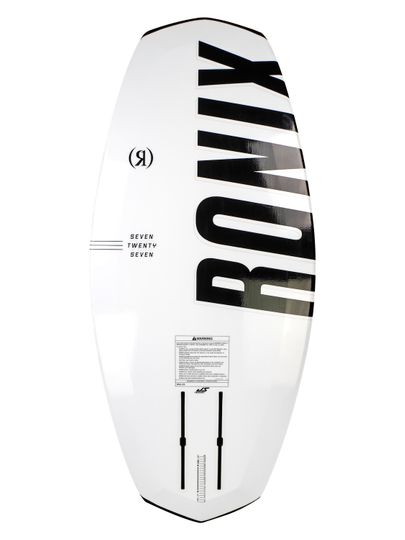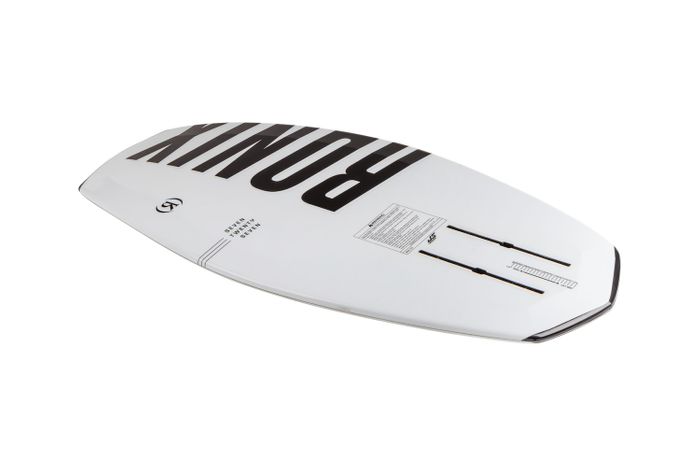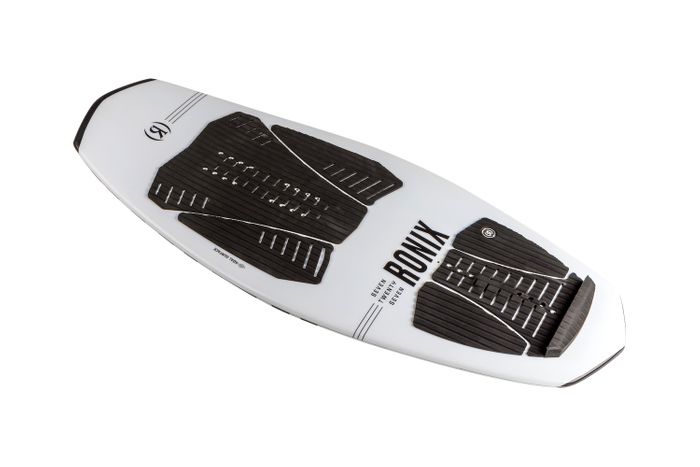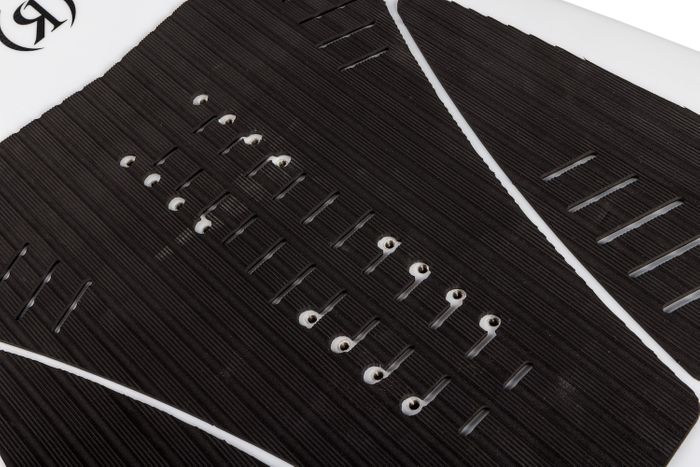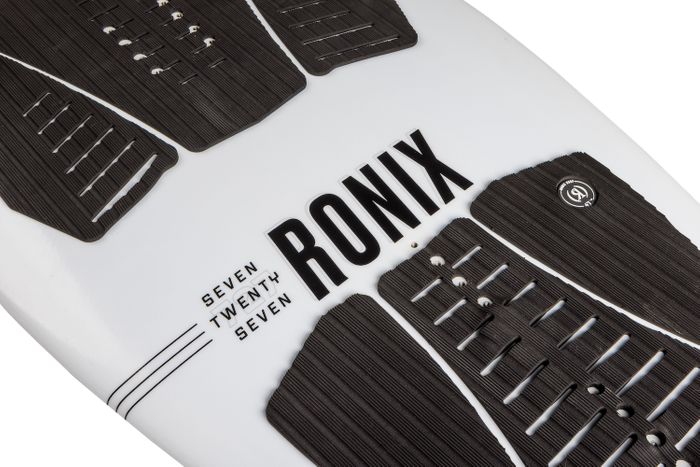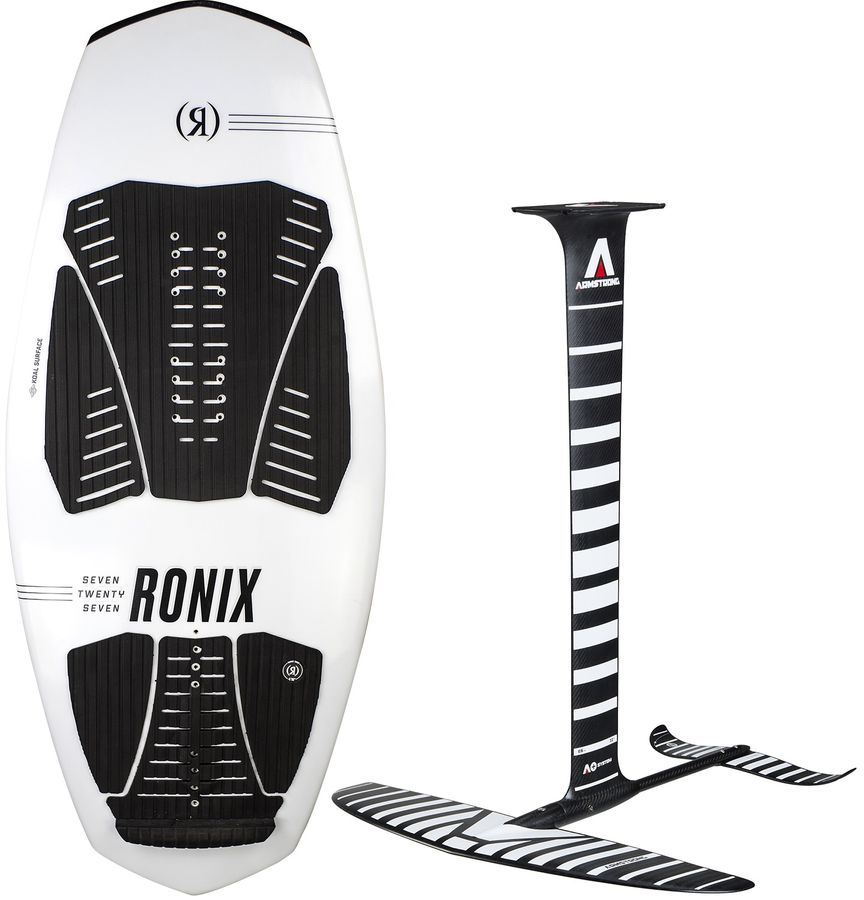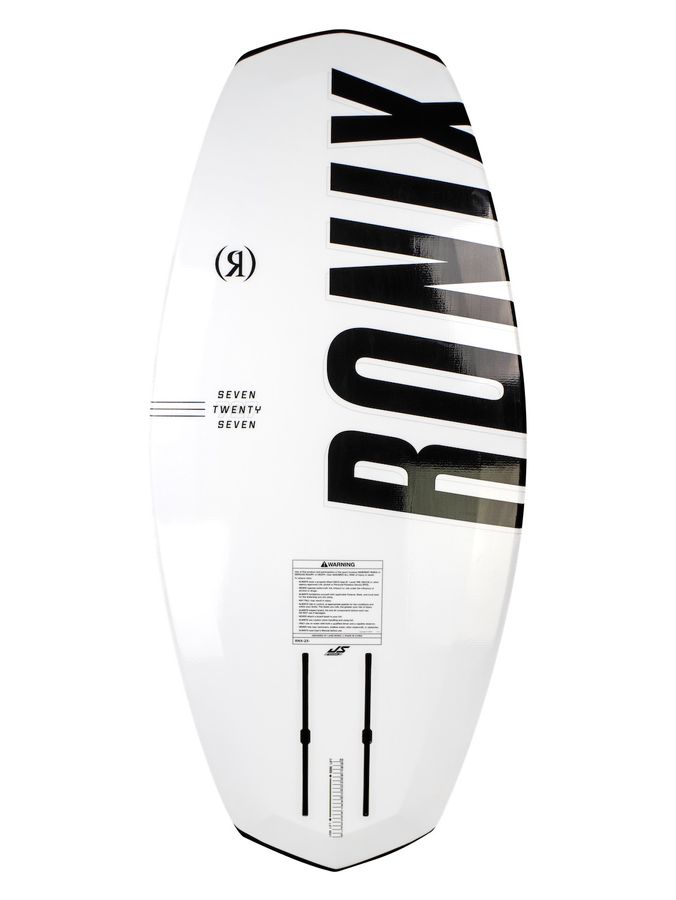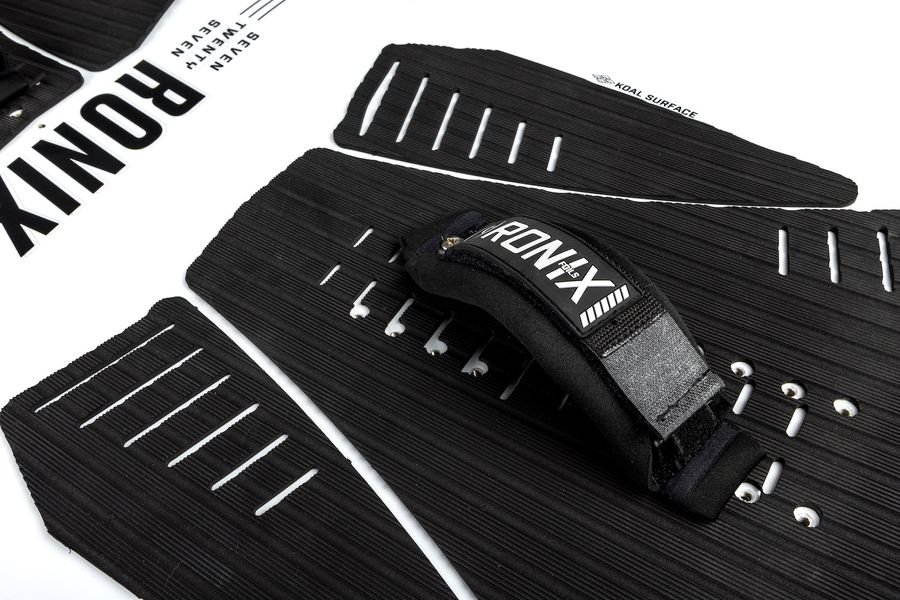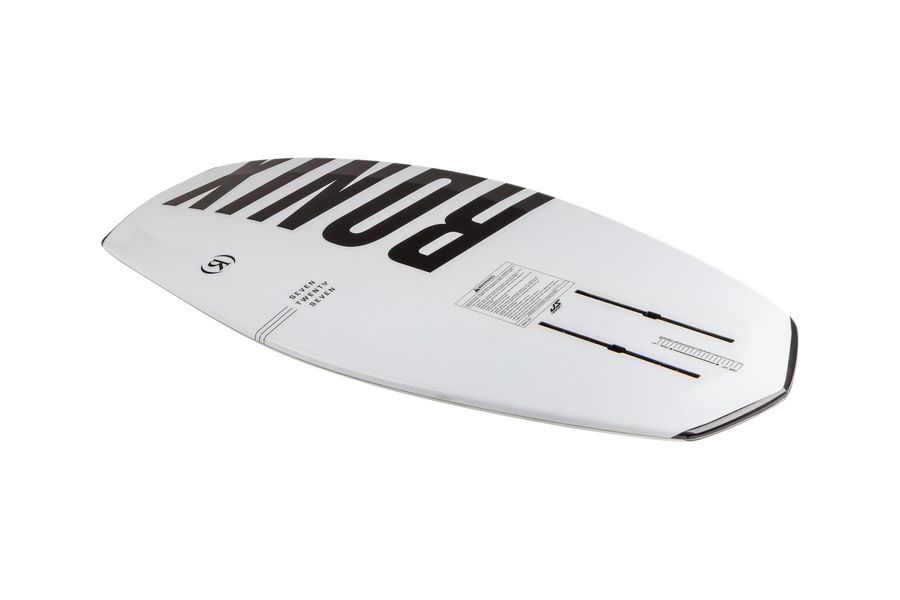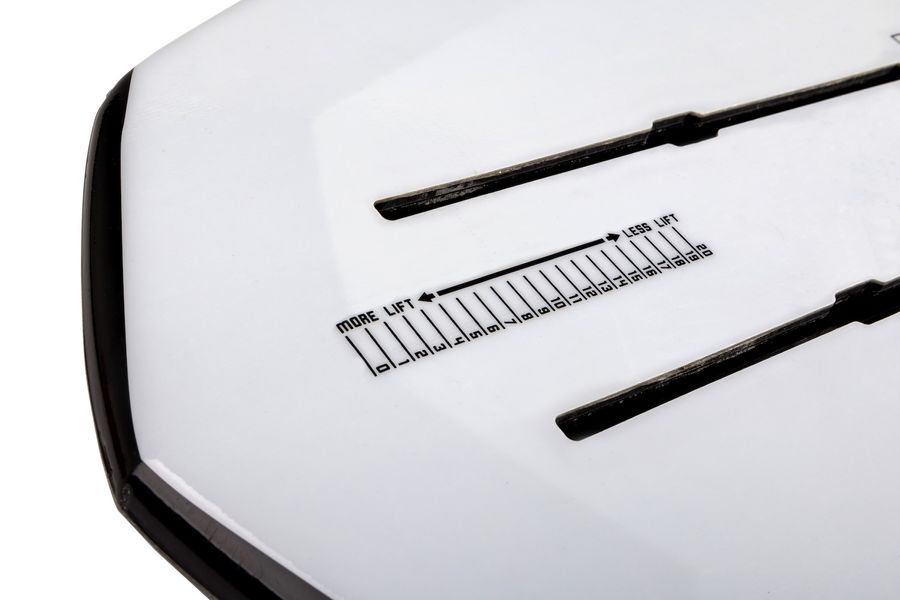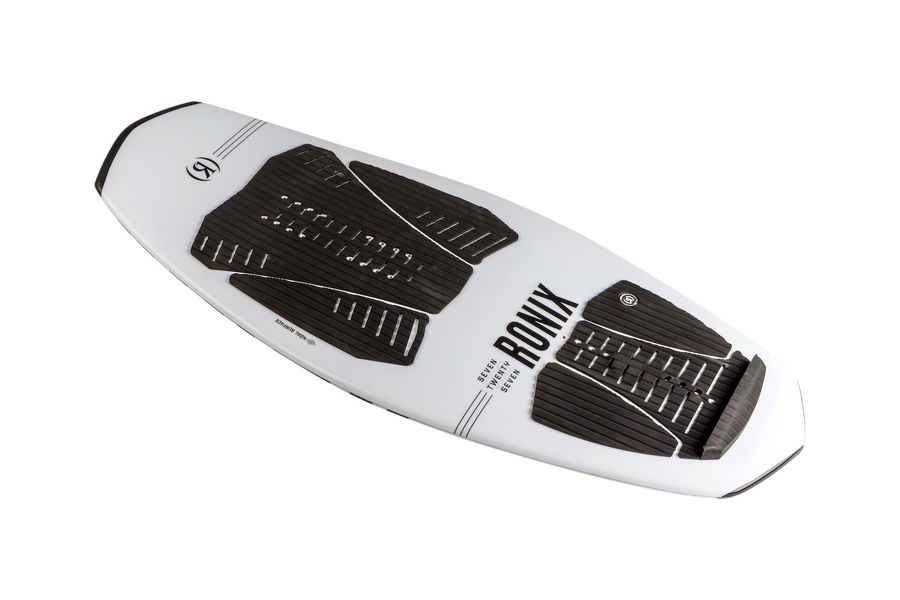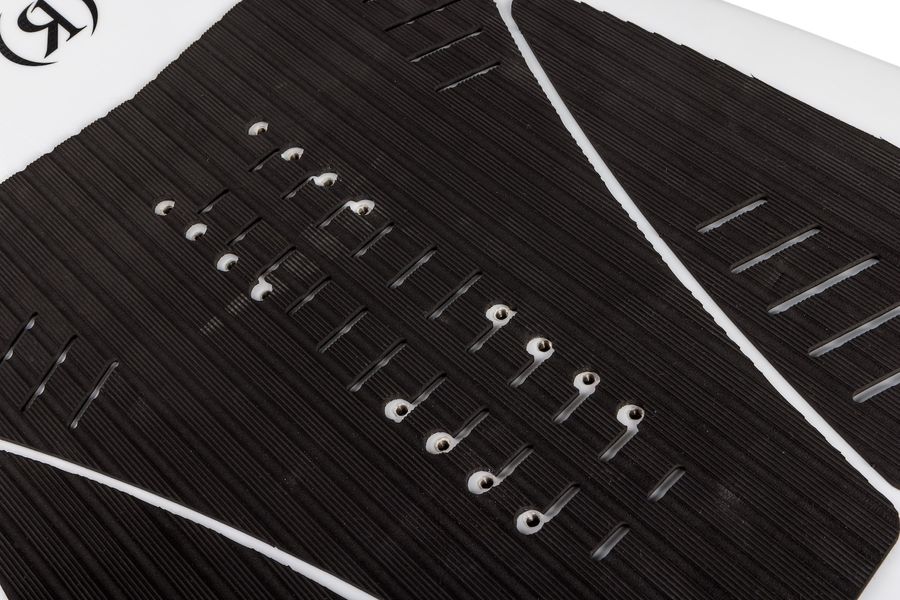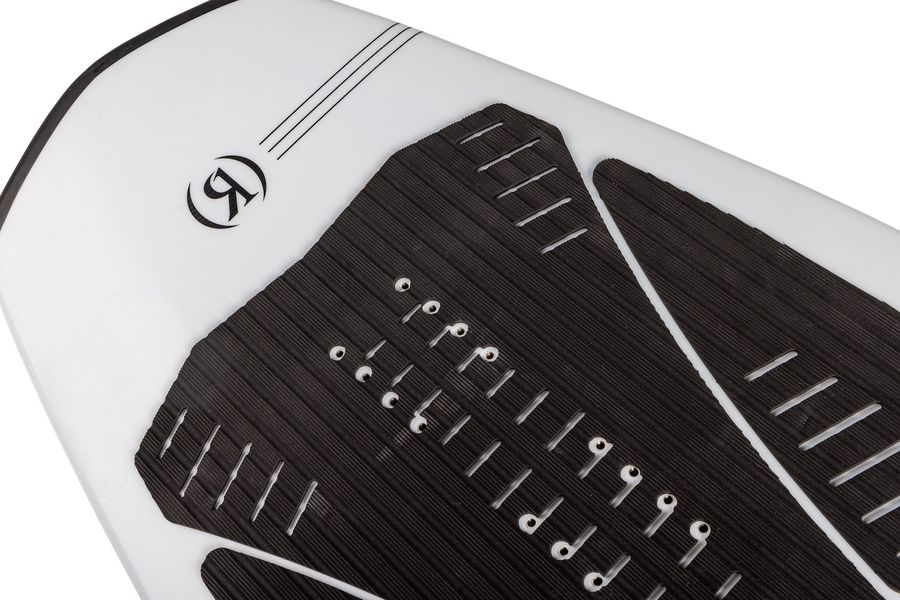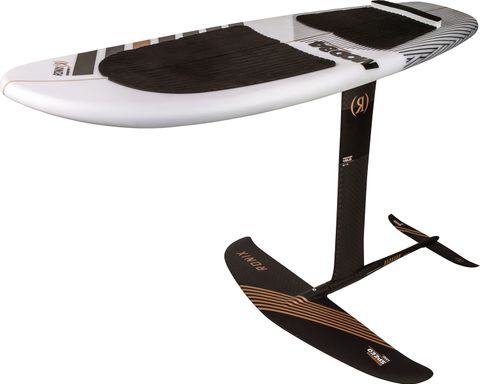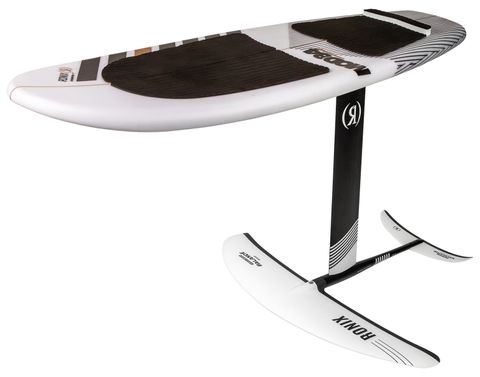Foiling is a beast of a sport and has exploded recently across all foil activities, wake, kite, SUP, and surf. While all have a margin of cross-over with optimal sizes of wings, masts, fuselages, and boards, wake foils are unique with their relatively low boat speed and small wave size. In addition to being difficult to ride, foiling is confusing and information and education regarding wake foils is vague for both staff and customers. In this article we’ll give you the low-down on all you need to know and walk you through the ins and outs of this complicated but rewarding tow sport!
HOW DO YOU WANT TO USE IT?
On a lake or river, where most of our customers will spend their time, foils can be used in several scenarios. When choosing a new foil, you should consider what goal you have and what you will use the foil for:
- Dock starts (Pumping on flat water and hijacking wakes)
- Surfing big wakes (Wakeboard boat)
- Surfing small wakes (Ski boat or 2nd and 3rd wake back)
FRONT WINGS:
Perhaps the most defining feature of any foil is the shape and design of the front wing. These differ greatly across all foiling activities and are the result of a combination of the following ingredients: Speed, stability, rider weight and preference. The surface area of the front wing is a good indication of lift the wing will create all else equal and is commonly measured as the projected surface area in square centimetres. Aspect ratios are something you’ll hear a lot of when discussing any foil activity and immediately categorises a front wing into two main categories:
- LOW/MID ASPECT: A short to medium wingspan with a deeper depth outline creates a foil that will soar with balance and reliability. Low/mid aspect wings are slower through the water but are manoeuvrable for carving and suit riders of all ability levels.
- HIGH ASPECT: A longer wingspan with a narrower depth outline creates a foil that will soar with minimal push or effort. High aspect wings have little to no drag but are less manoeuvrable for carving. They are best suited to intermediate and advanced riders doing dock starts, hijacking wakes and surfing small boat wakes.
FRONT WING SIZING:
Choosing a front wing size depends on the style of wing itself, what it is being used for and the weight of the riders using it. A foil needs to generate enough lift to overcome a rider’s weight at speeds determined by if you’re surfing behind a boat or pumping flat water.
- Wake boat wakes will suit smaller front wings
- Ski boat wakes will suit larger front wings
- Riders over 95+ kg should always consider larger front wings
- Consider a 1600+ sqcm high aspect front wing for dock starts
MAST LENGTH:
The mast is the long structure made of aluminium of carbon fibre that is the link between the board and the foil itself. The mast size is important as it balances the kind of foiling you can do with how stable the overall package is.
- ADJUSTBLE MASTS: A short mast will mean a rider is closer to the water resulting in more gentle falls and will dramatically improve stability as the leverage distance is decreased. Adjustable mast accommodates lengths of between 35 and 50cm making them the best choice for riders new to the sport. Adjustable masts are commonly made of aluminium.
- FIXED MASTS: Most fixed masts range between 60 and 85cm and are made from either aluminium or carbon fibre. Longer masts will give you more clearance which allows for steeper turns without the rails touch the water, more leverage, slower pumping motions and less chances of the foil breaching the water’s surface. Longer masts of 70 – 85cm are best suited to intermediate and advanced riders who want maximum flexibility and range of movement for foiling applications behind large wake boats and pumping open water. Longer masts are very difficult for beginners to learn on. We recommend starting with a shorter mast and upgrading in the future.
REAR STABILIZERS:
The rear stabilizer is designed to complement the front wing and provides a balance of stability and performance based on the foil’s application. Rear stabilizers are like front wings with the same concepts applying: High aspect wings are most efficient, low aspect wings are easier to control and curved up or down wing tips provide directional stability and reduce turbulence. Some foil kits include shims to increase or decrease the amount of lift without changing the size of the stabilizer itself.
FUSELAGE LENGTH:
The length of the fuselage balances response and stability and is most often pre-determined in a foil kit based on the design of the front wing. A longer fuselage makes it easier to control the pitch, while a shorter fuselage makes rider inputs more sensitive but allows for tighter turns and quicker pumping motions.
FOIL CONSTRUCTION:
Foil construction is an important consideration for performance and longevity. As construction quality improves, flex decreases offering a rigid, responsive, and lively feel through the water. Most front wings and rear stabilizers are made using moulded carbon fibre with foam cores which strikes a balance between performance and cost. A foil made of 100% carbon fibre are generally lighter than those with foam cores and have a more lively feel all else being equal but are significantly more expensive to make. There are differences in grades of carbon fibre so not all carbons are equal.
Masts and fuselages are commonly made of anodized aircraft aluminium which are less expensive and heavier compared to carbon fibre but are still relatively strong and rigid. Aluminium corrodes in salt water so be sure to regularly disassemble your foil and provide maintenance.
FOIL BOARDS:
Foil boards are unique amongst water sports as their volume, length, bottom shape, rails, strap compatibility, and construction will all influence how the foil board performs stopped in the water, in displacement mode, on plane, and in the air. In general, beginners will benefit from larger, more stable boards with most riders decreasing in board length as they progress through the sport. Wake foil boards are unique amongst foil activities as we often start with the board already under our feet. The board needs to be buoyant enough to give us feel and control, whilst not being too buoyancy that it makes it difficult to keep under our feet. In contrast to every other water sport, a foil board needs to release as quickly off the water surface as possible allowing the mast to get back to the correct height again. If the board sticks to the surface of the water, speed is lost, and lift reduced.
- UNIVERSAL FOIL MOUNTING SYSTEM: Most foil companies use an industry standard 9cm foil track so nearly every modern foil connects to nearly every modern board. While most foils are sold as packages, it is possible to purchase boards or foils separately.
- FOIL BOARD SIZE GUIDE:
- 4’0” - 4’5 (Up to 90 kg)
- 4’6 – 4’8 (75+ kg)
Armstrong 2024 KOAL SURFACE 727 WITH 85CM MAST & CF1200 V2 FOIL
Description
RONIX KOAL SURFACE 727 BOARD: The 727 is a design that combines the most important needs in a proper foil board - deflection, buoyancy, tempo, and footwear. A construction incorporating the core of our high-end Flyweight Pro series but wrapped in a bulletproof Surface Skin. In short, the lightweight feel of your favourite high-end surfer, the durability of your favourite wakeboard, and a skin that breaks up the water for less resistance.
ARMSTRONG CF1200 FOIL: Broad Performance for a Wide Range of Disciplines, Skill Levels and Rider Weights Whether you’re just discovering foiling or already proficient, the CF1200 embodies the broad range of use that makes CF V2 so appealing.
ARMSTRONG CF FOIL RANGE: Confidence-Inspiring Stability And Versatile Performance. The CF V2’s all around user friendliness appeals to both beginners seeking a foundation for progression and experienced riders pushing their boundaries. Low stall speeds combined with excellent pitch stability provide control and increased flying time across a variety of foiling sports. A stable, predictable foil helps to make progression easier and safer. If you’re just beginning your foiling journey or are already an advanced rider, this range has a size tailored for you. Whether you're trying your first gybes or perfecting your backflips, the CF V2's exceptionally forgiving low speed handling keeps the foil flying easily while you focus on the manoeuvre. Designed to inspire confidence, this range of foils enables intermediate and advanced riders to explore new territory whether it’s under a wing, behind a boat, or on a wave face. Sized from 950 to 2050sq/cm, the CFv2 range truly caters to the full spectrum of rider levels, weights and foiling sports. As your experience level and style evolve, the modular Armstrong A+ System offers component choices to match your progression.
Specifications
• 10” track length with industry standard 3.5” width between tracks
• Foil Specific Design
• Front & Rear Blended Grooved EVA Pads
• 2 Adjustable Removable Straps Included
• Arch Support & Extra Tall Tail Wedge
• Liquid Lava High Temp Surf Resin
• Air Vents Inserted in EVA Tail Wedge
• Core - Handmade by Robots
ARMSTRONG CF1200 FOIL:
• Wake: Riders 65-89kg (143-171lb).
• Area: 1200 sq/cm
• Wingspan: 746mm
• Weight: 1020gr
• Aspect Ratio: 4.9
• Predictable, progressive lift characteristics cater to beginner surf foilers.
• Wider speed range is ideal for intermediate and advanced wing and kite foilers.
• Optimised for tight turns in the pocket when foil surfing.



